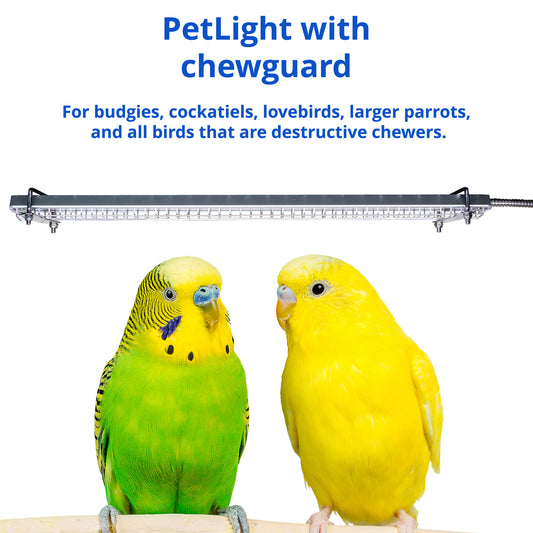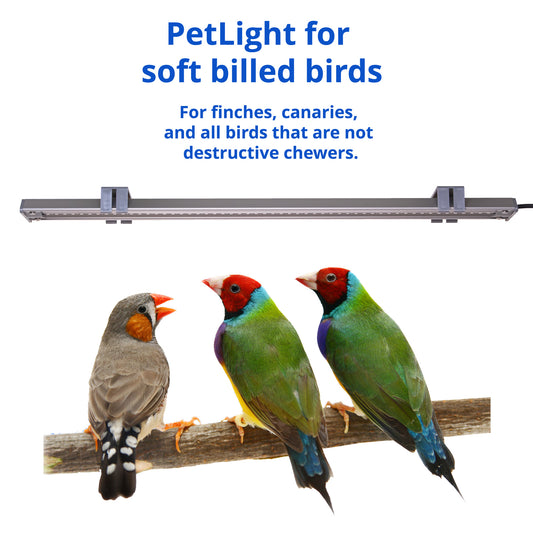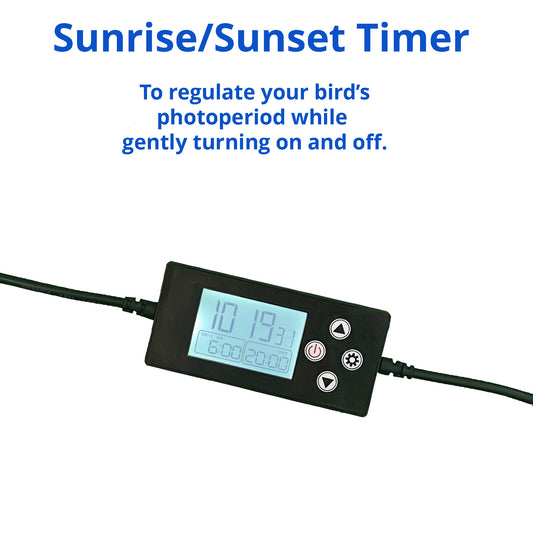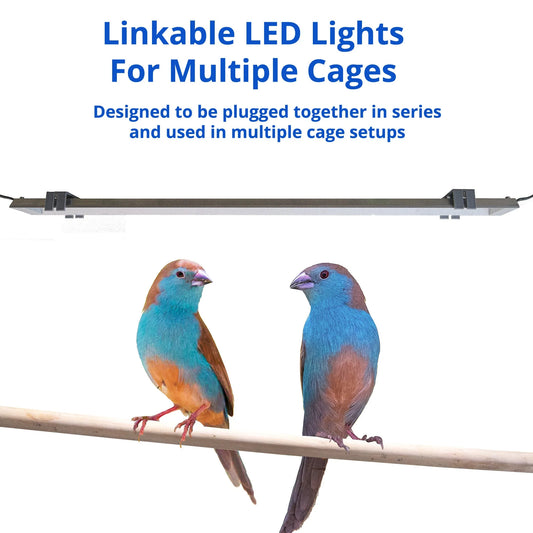How to Introduce Your Bird to a New Light Source
Share

Why Slow Introduction Matters
Adding a new bird light to your bird’s cage can be a fantastic upgrade — but for many birds, any change to their environment must be done gently. Birds are naturally sensitive to visual cues, and a sudden burst of light (or a strange new object) can cause unnecessary stress or confusion.
This post walks you through how to introduce a new bird light safely and gradually, so your feathered friend has time to adjust and benefit from the change — without disruption to their routine.
Step 1: Don’t Turn It On Right Away
When you first mount the new light — especially if it’s a cage-mounted system like HappyBird — resist the urge to power it on immediately. First, let your bird become visually familiar with the shape, location, and presence of the light while it’s turned off.
Let the light be part of the cage scenery for 24–48 hours so it doesn’t feel foreign or threatening.
Step 2: Use Short Exposure Windows at First
After the adjustment period, introduce the light in short bursts. Try 10–20 minutes at a time during your bird’s most active hours. Keep a close eye on their behavior:
Do they move away from the light?
Are they unusually quiet or overactive?
Do they seem curious and calm?
If your bird appears unsettled, reduce the exposure time and try again later in the day.
Step 3: Increase Duration Gradually
Once your bird accepts the light in short sessions, gradually extend the usage time each day. Move toward the ideal goal of 10–12 hours of consistent light per day. This structured rhythm mirrors natural day cycles and supports behavior and activity levels.
Always introduce consistency slowly — the key is helping your bird associate the light with normal, predictable parts of the day.
Step 4: Pair the Light with Positive Associations
To make the experience more rewarding, try syncing the light’s “on time” with something your bird enjoys:
Their favorite food
A short training session
Active playtime
This helps the bird associate the light with comfort and routine.
Step 5: Monitor Cage Position and Shadows
Even the best light won’t be helpful if it creates glare or uneven shadows. Make sure the light is:
Mounted above the cage, not at eye-level
Shining downward, mimicking natural sunlight
Evenly covering the bird’s primary areas (perches, feeding station)
If you notice your bird avoids certain spots in the cage after the light is turned on, reposition the light to avoid direct glare.
Bonus Tip: Use a Timer or Sunrise Dimmer
A sunrise/sunset timer can ease the transition even more by mimicking natural light ramp-up and wind-down patterns. Sudden on/off switches can startle birds — gradual transitions are calmer and more intuitive.
HappyBird’s timer system was specifically designed with this in mind.
Conclusion: A Gentle Start Means a Happier Routine
Birds thrive on rhythm, routine, and environmental stability. When introducing any new lighting system, doing it gently can be the difference between a stressed bird and a happy one.
With the right light and the right approach, your bird will enjoy a bright, structured, and enriching cage environment — one they learn to love.




